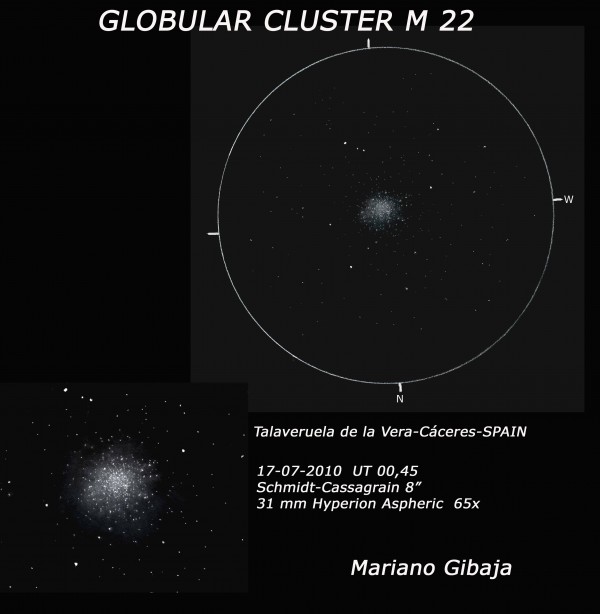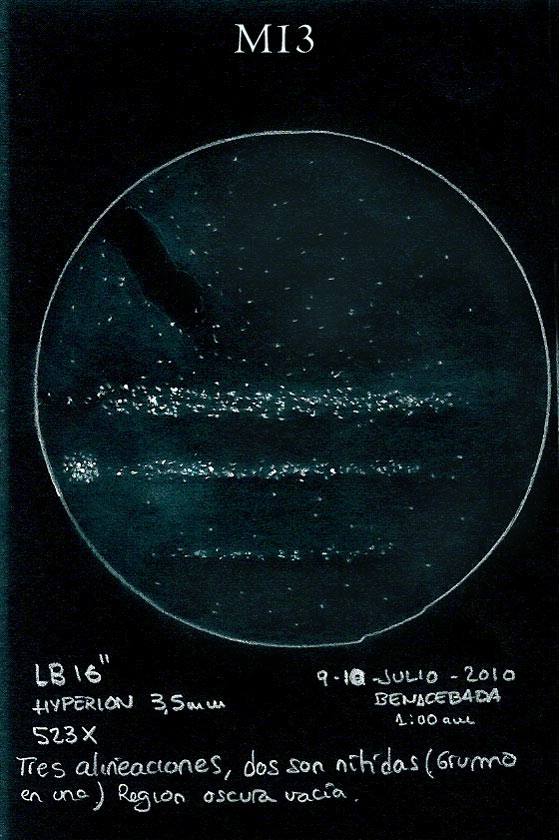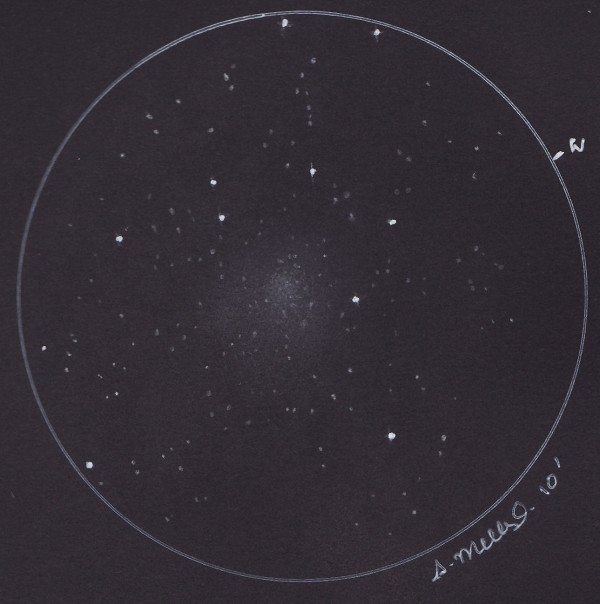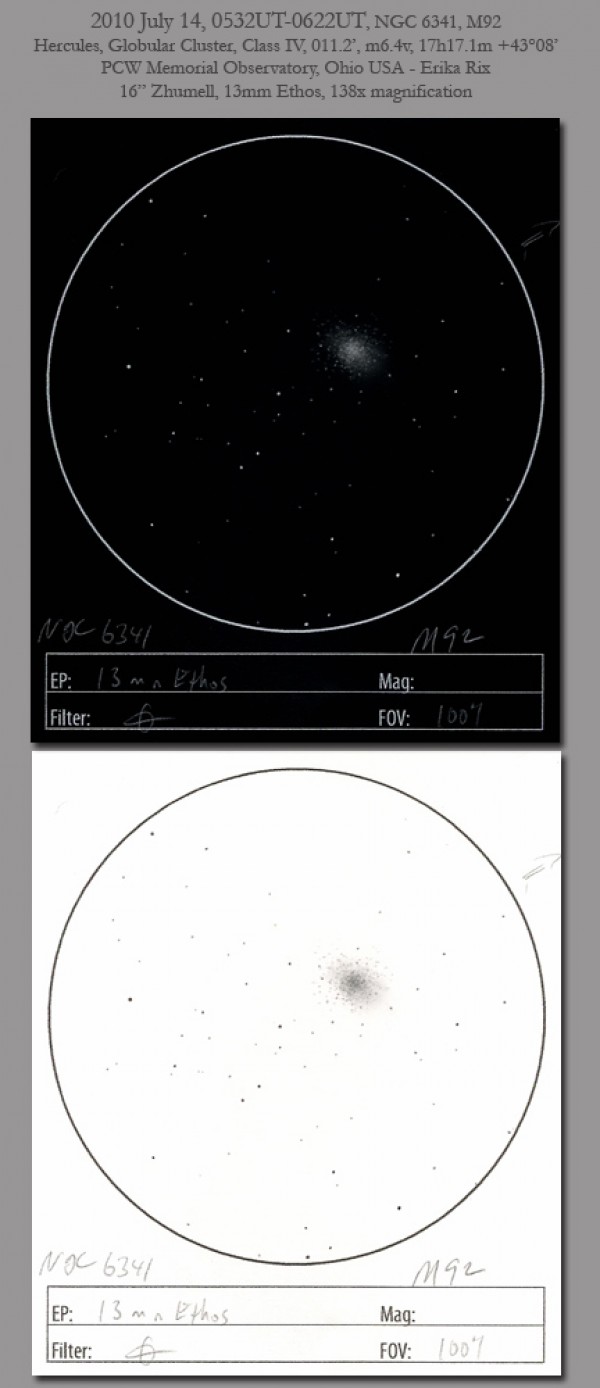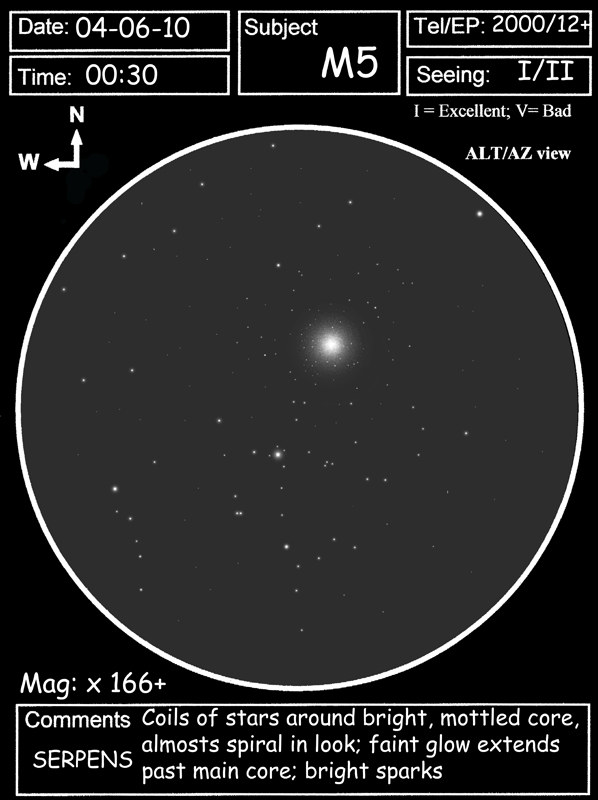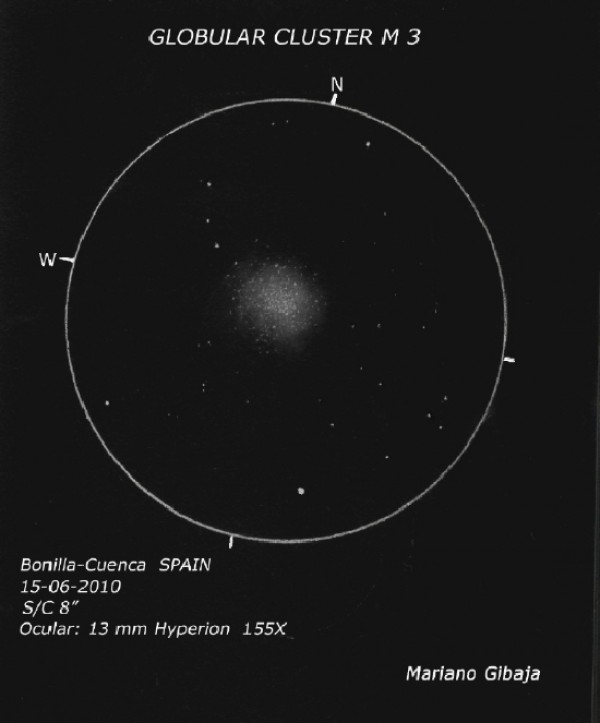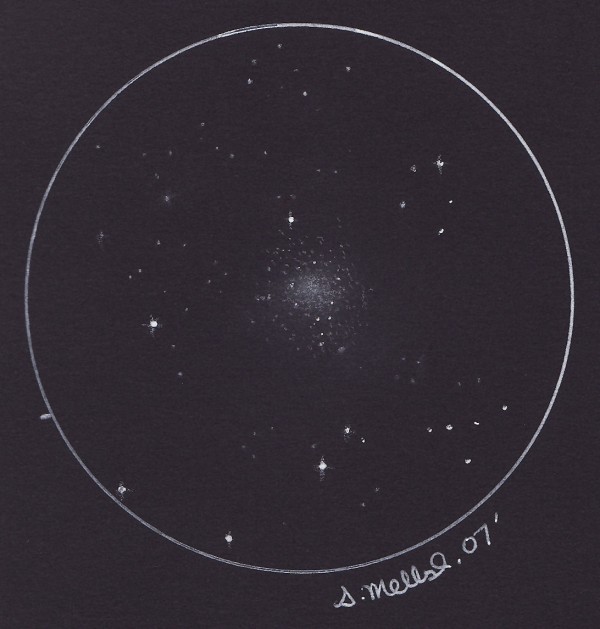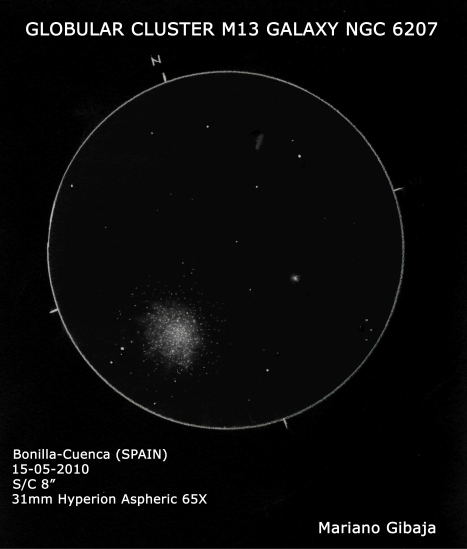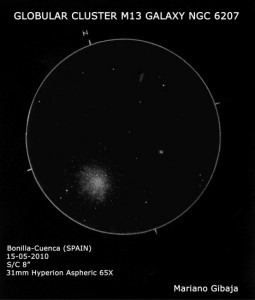Object Name: M 22 (NGC 6656)
Object Type: Globular Cluster
Constellation of Sagitarius
Location: Talaveruela de la Vera-Cáceres;SPAIN
Date: 17/07/2010
Media: graphite pencil, white paper, inverted GIMP 2
Telescope: SCT 8″
Eyepiece: 31 mm Hyperion-Aspheric
Mag.: 65X
Spanish-English translation using Google Language Tools:
M22 is an impressive globular cluster in the constellation Sagittarius. It
is located at a distance of approximately 10,000 years light. The cluster is
brighter than an observer can see the northern hemisphere and only than
Omega Centauri and 47 Tucanae.
The picture at the bottom is an extension of M 22 scanned at higher
resolution.
Mariano Gibaja
